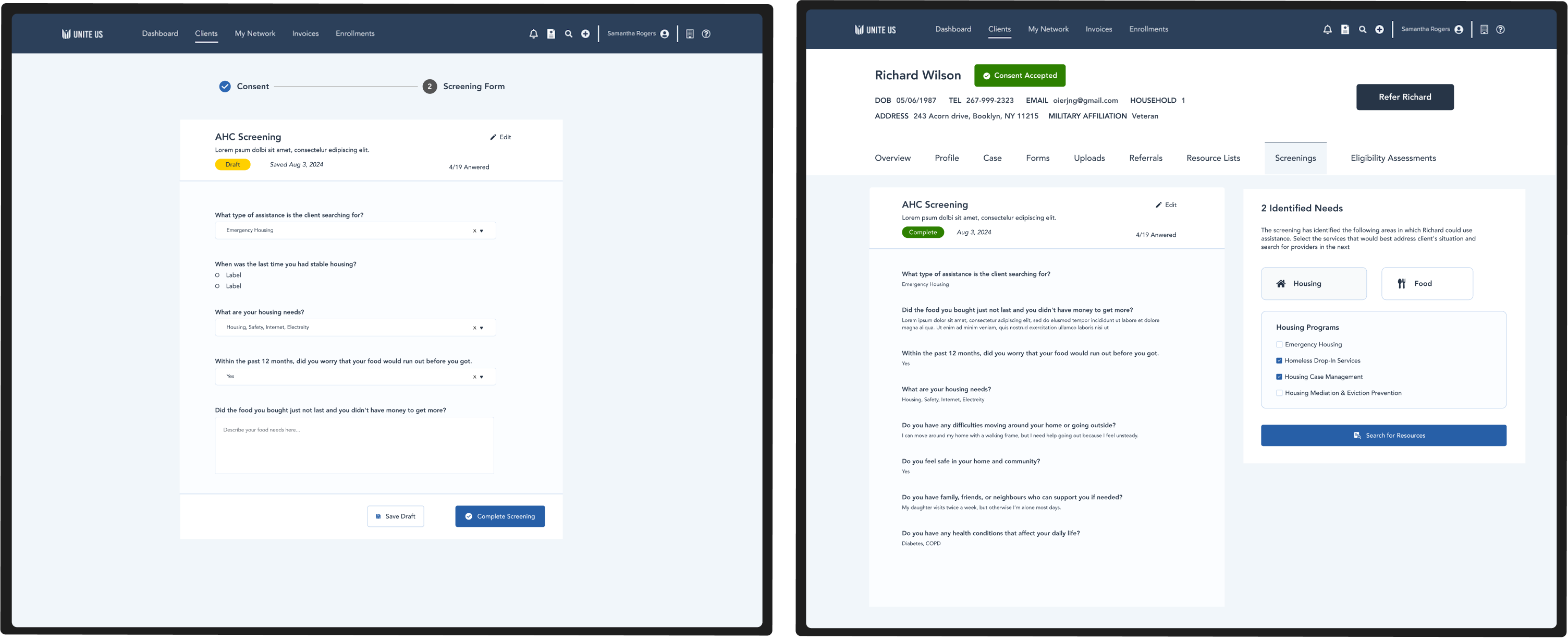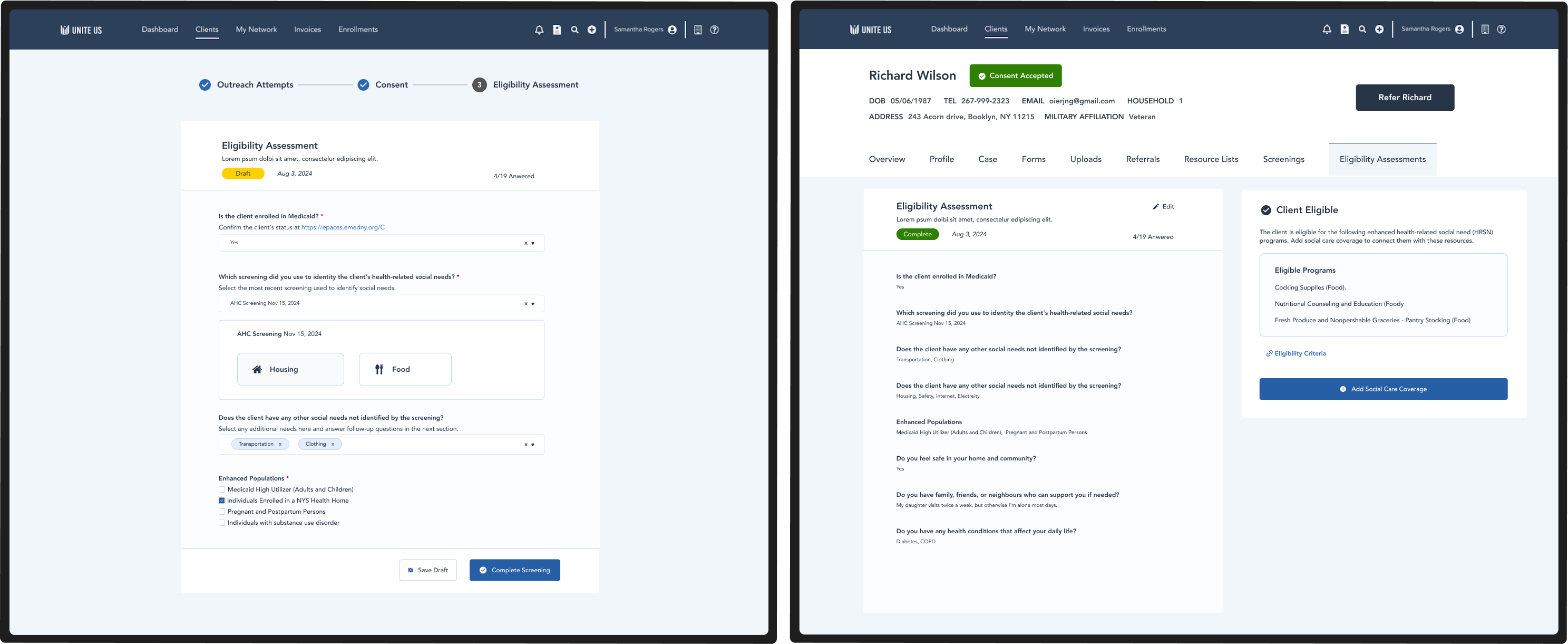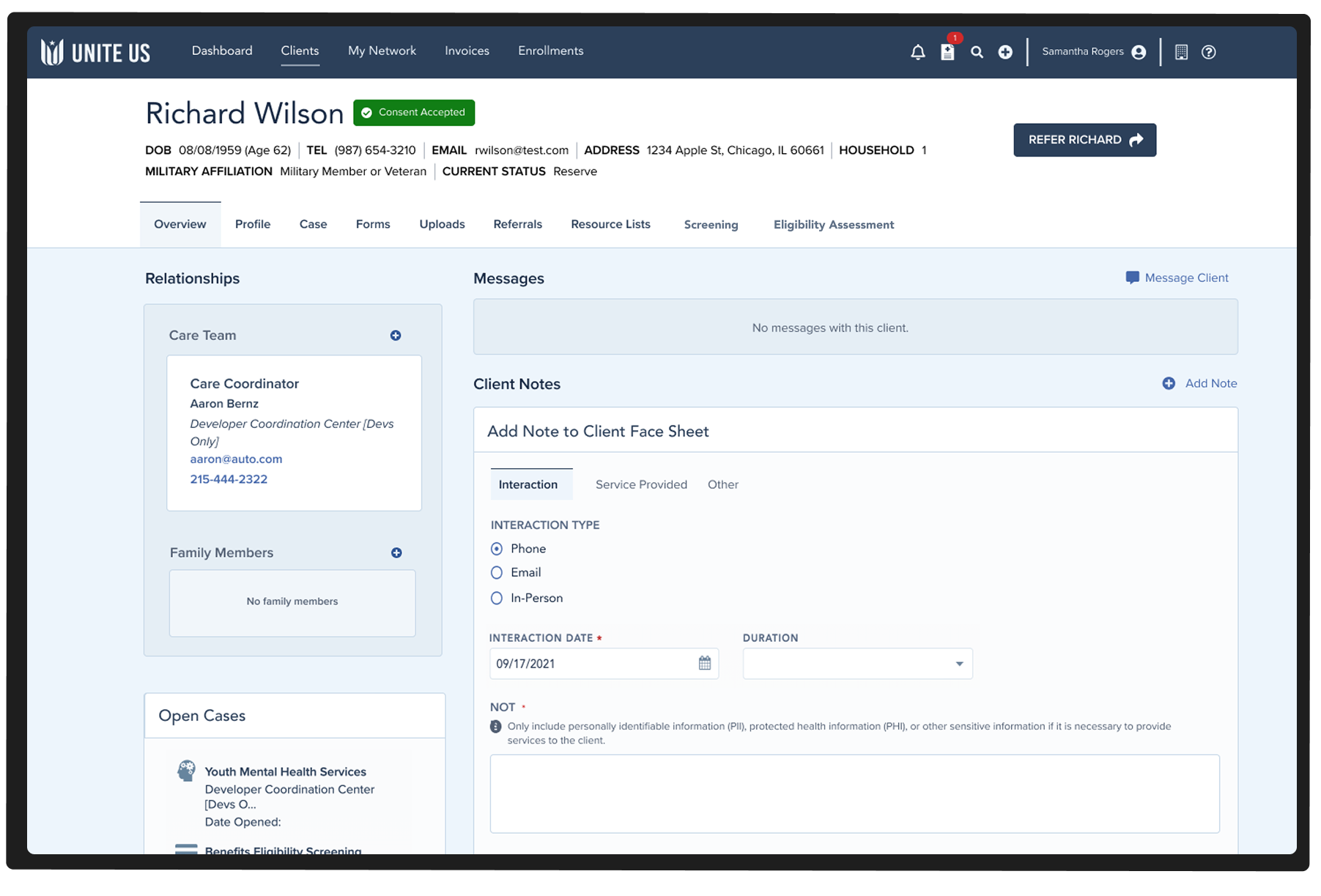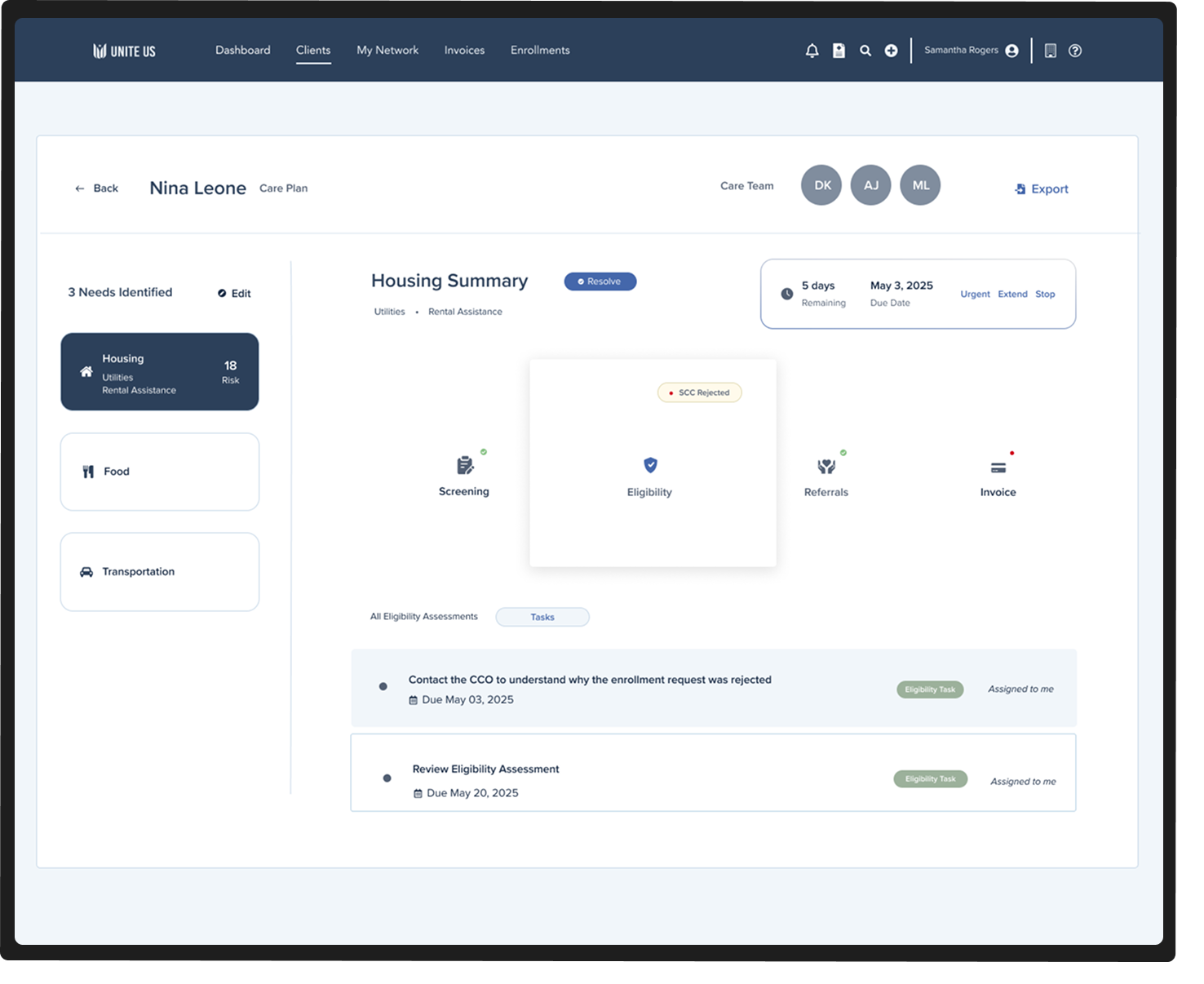NY Medicaid 1115 Waiver
The NY 1115 Medicaid Waiver is an investment of over $7 billion through 2027 in expanding Medicaid into innovative solutions for holistic, value based care addressing systemic needs like food insecurity and housing stability. Unite Us was selected to serve as the infrastructure for this initiative.
My role as a designer was to create a workflow that connects a multitude of user roles in a complex social and healthcare landscape, including CBOs, healthcare providers, and MCOs. We accomplished this by designing next best actions, leading users from Screening Assessments (questionnaires identifying social needs) to Eligibility assessments (determining eligibility for reimbursement of services provided).
Time and resource constraints limited our ability to design an ideal solution. After product delivery, I designed a Care Plan that combines these disparate steps into a seemless experience.
Role
UX Designer
- Screening Workflow
- Eligibility Assessment Form
- Care Plan
Impact
- Connected the CBOs, healthcare providers, and MCOs in 9 of the 13 New York State regions, representing 72% of Medicaid members across the state.
DEFINE
%202.png)
The NY Waiver complexity stems from the diverse set of user and client types that have different needs throughout the workflow. I started this work by laying out the workflow end-to-end, blue squares representing client entry points and purple squares representing users (case managers and SCN Leads). From there we needed to piece together disparate feature sets to address waiver requirements.
We also needed to introduce core pieces of functionality to help identify client social care needs through Screenings and Eligibility assessments. Each form would generate needs based on answers to questions like food insecurity levels or housing situations.
DESIGN
Screenings
A major part of the waiver requirements was to identify the client's social needs based off of screening answers. First we decided to introduce screening statuses, where needs would be produced only when the client has completed the screening. Each need has associated suggested programs, which can be pre-selected to refine Search results.
Impact
Since service reimbursement is the foundation of the Waiver, generating needs directly from screenings gave New York payers greater confidence that they were funding services clients genuinely required. Our workflow facilitated approximately 90,000 NY1115 screenings in just six months - a testament to its efficiency and effectiveness.
Eligibility Assessments
Now that the client has identified Needs through the Screening, users need to determine whether the client is eligible for "paid programs" where CBOs can be reimbursed for providing services. We decided to share designs with Screenings for consistency. The complexity of this work was in introducing conditional logic in the form, asking specific questions depending on previous answers. From a design perspective, we ran the risk of the form getting too long, but decided on keeping all questions on the same page as opposed to breaking them into steps so that users could easily reference previous answers.
A completed Eligibility assessment generated suggested paid programs the client could be reimbursed for.
Impact
Adding eligibility assessments strengthened our ability to verify that clients qualified for service reimbursements. Prior to this, clients could receive services they weren't eligible for, leading to invoice rejections. Our solution helped prevent these issues and improved billing accuracy.
Care Summary
Once the user has completed the Eligibility Assessment and Screening, they will need to provide services. Above is the overview tab of the face sheet, but it lacks any mention of the social needs identified from the assessments which should inform next steps and the referrals made. Users have requested for a "Care Plan", that allows users to track identified needs and the status of addressing them.
The Care Plan design above would serve as a summary of the needs identified in the Screening and E.A., and can be used to track the statuses of addressing them. The left hand panel shows the identified needs, and on the right are the four major stages of the care journey for each need, including Screening, Eligibility, Referrals, and Invoicing. Each stage has its own set of notifications and tasks where the user can manage them dynamically in one place.



